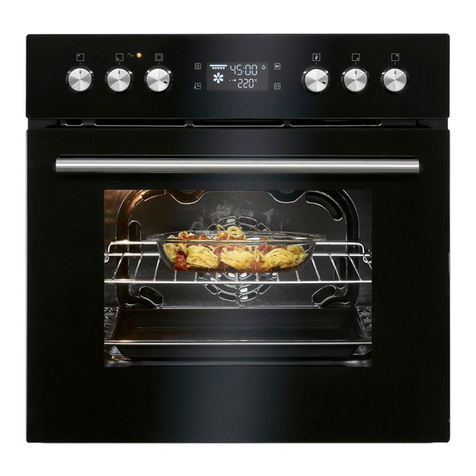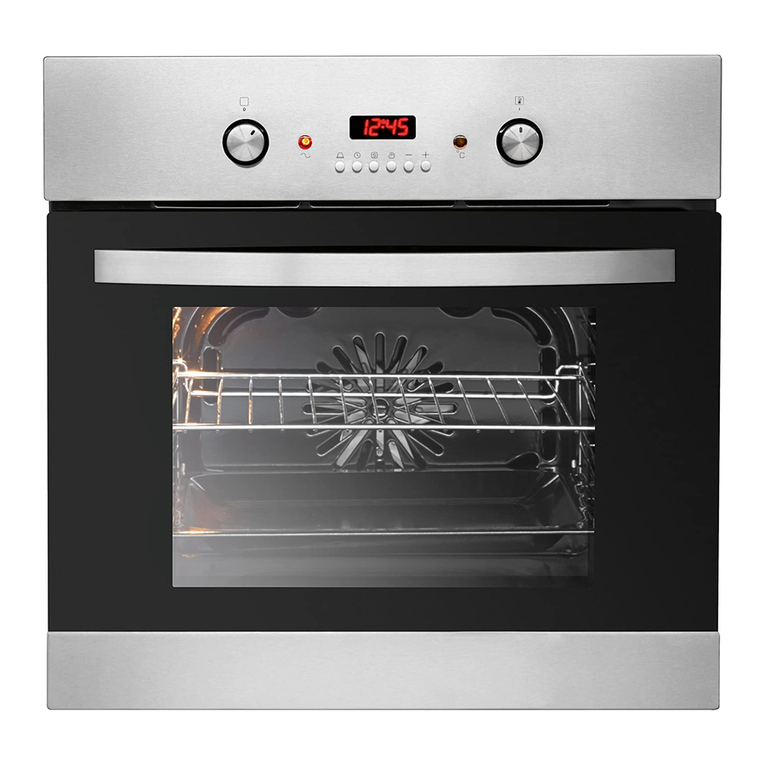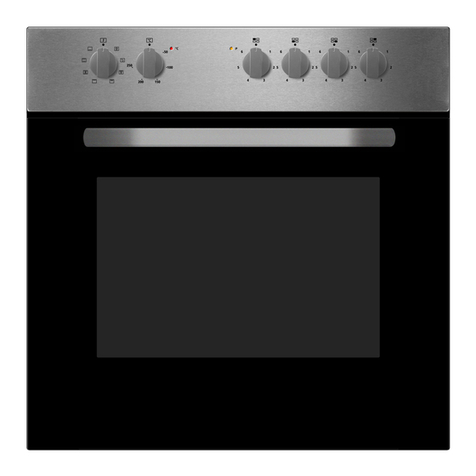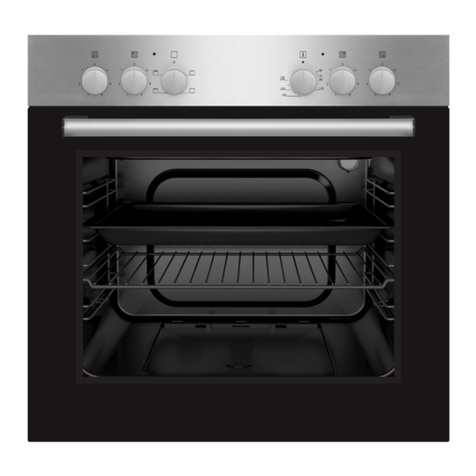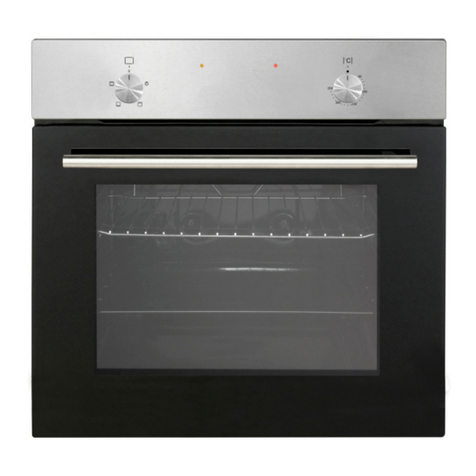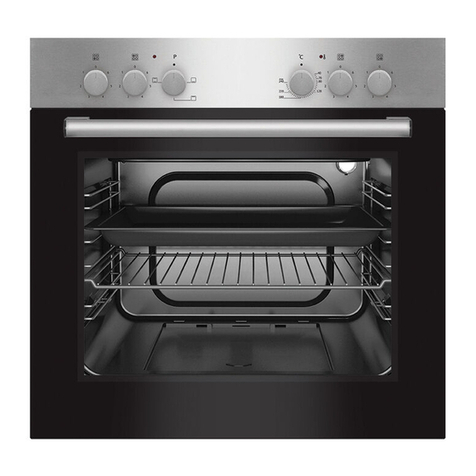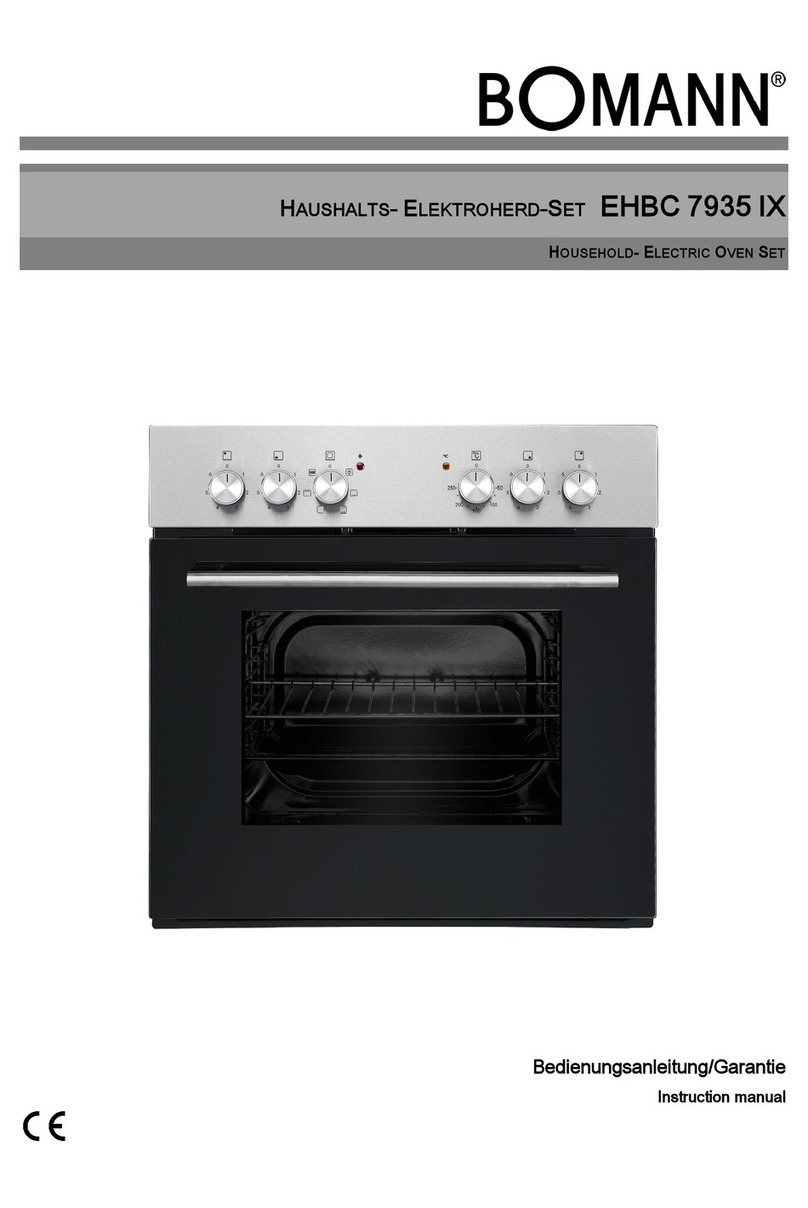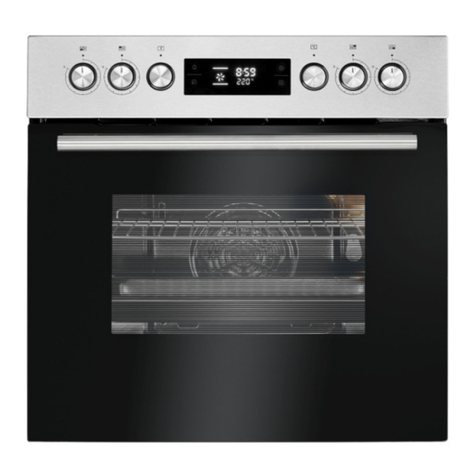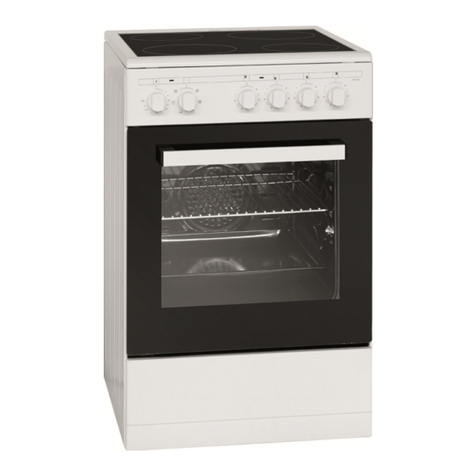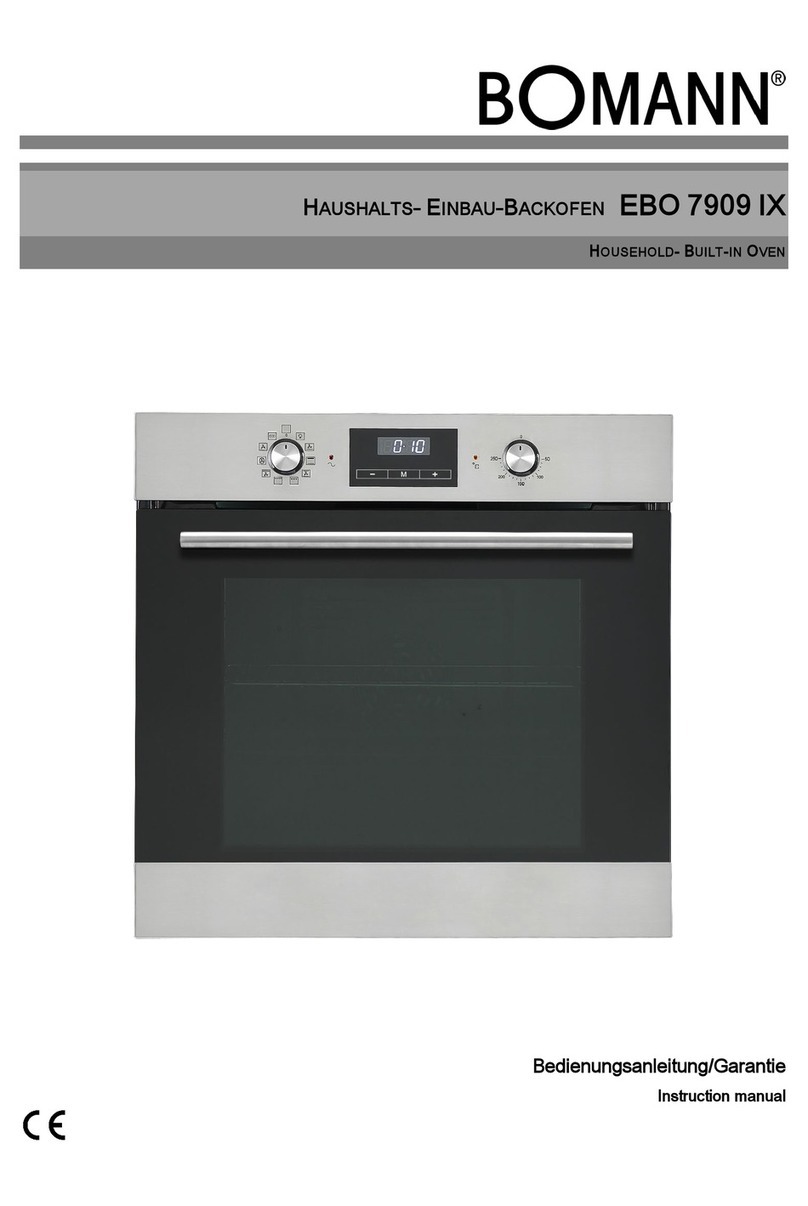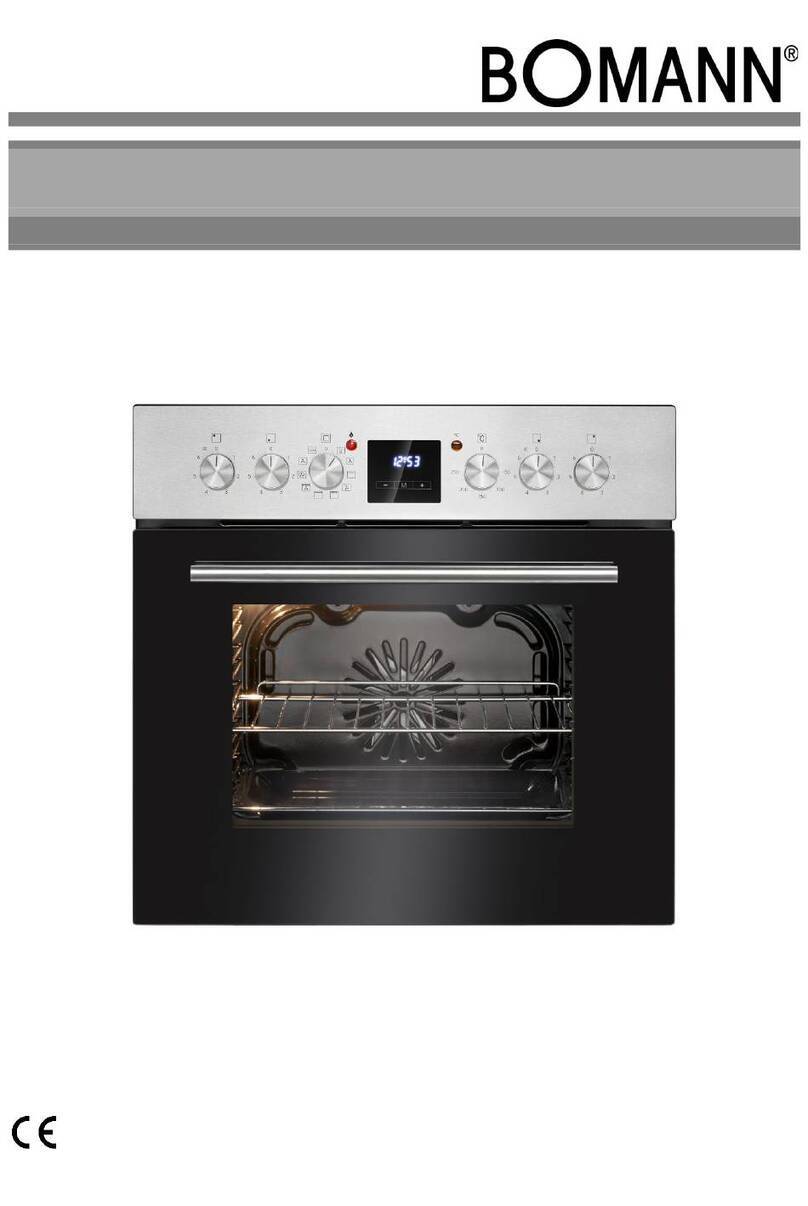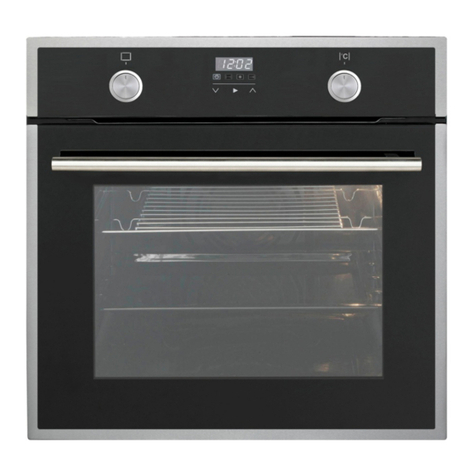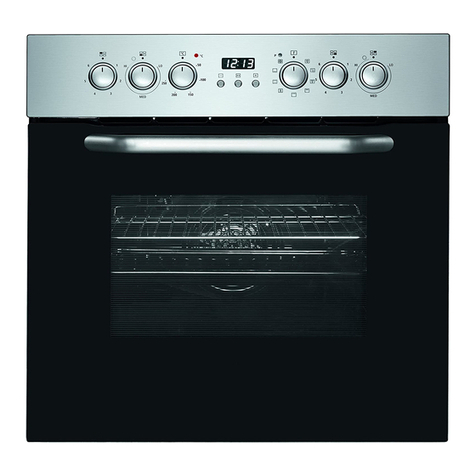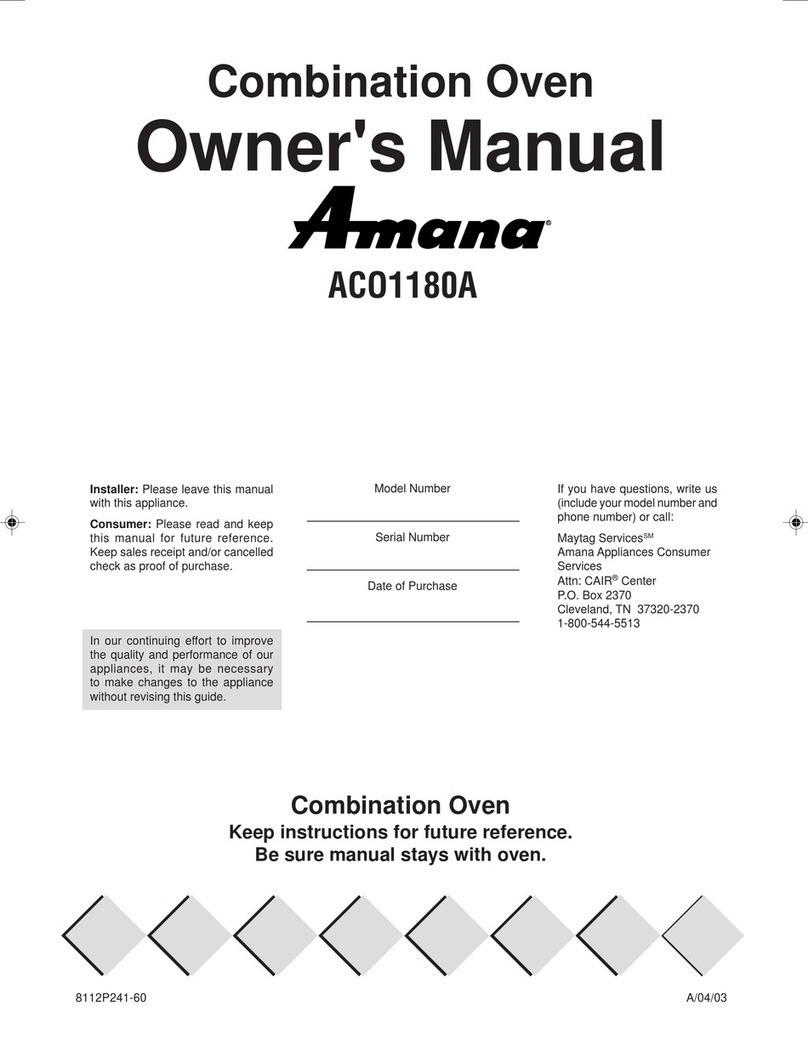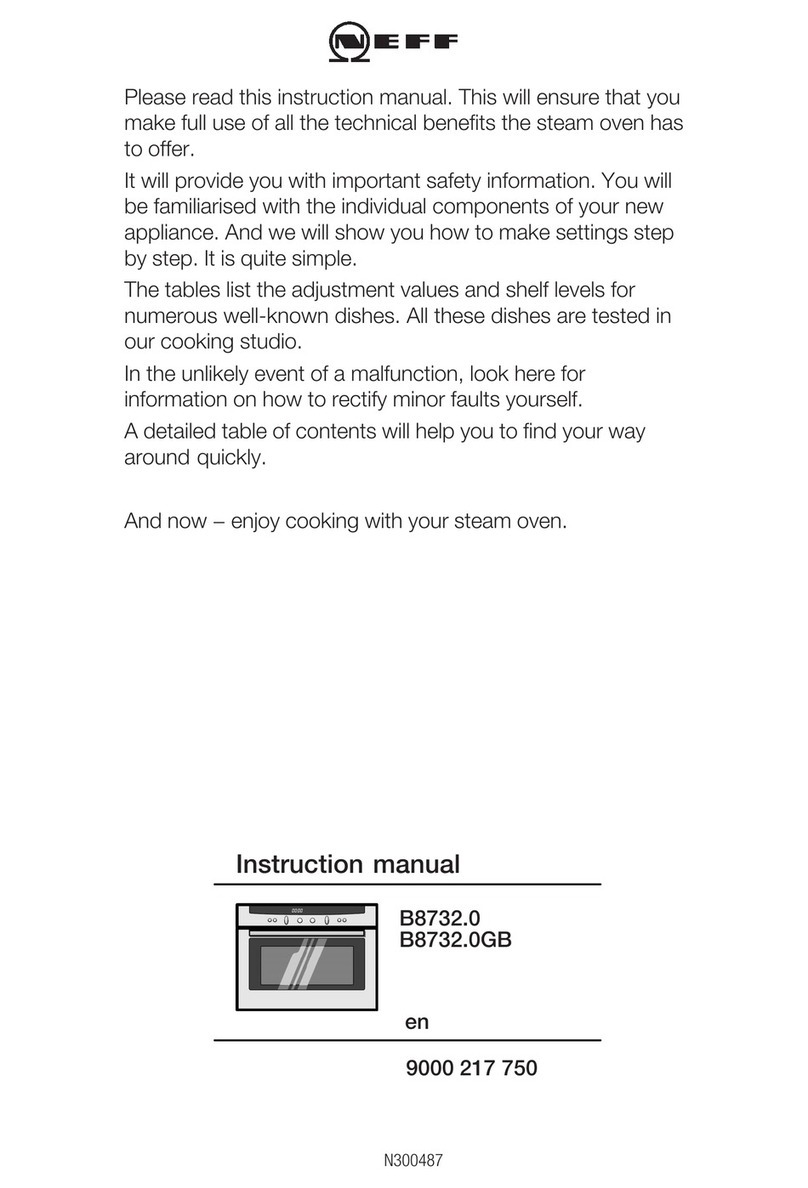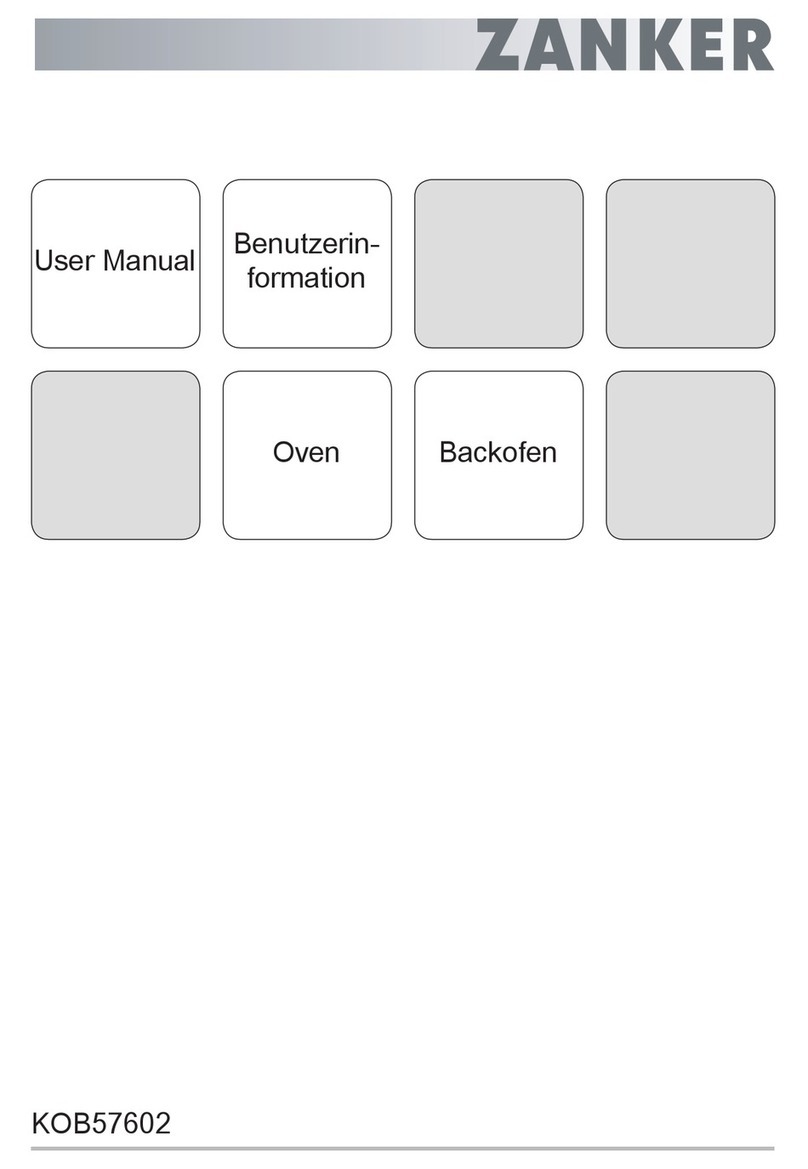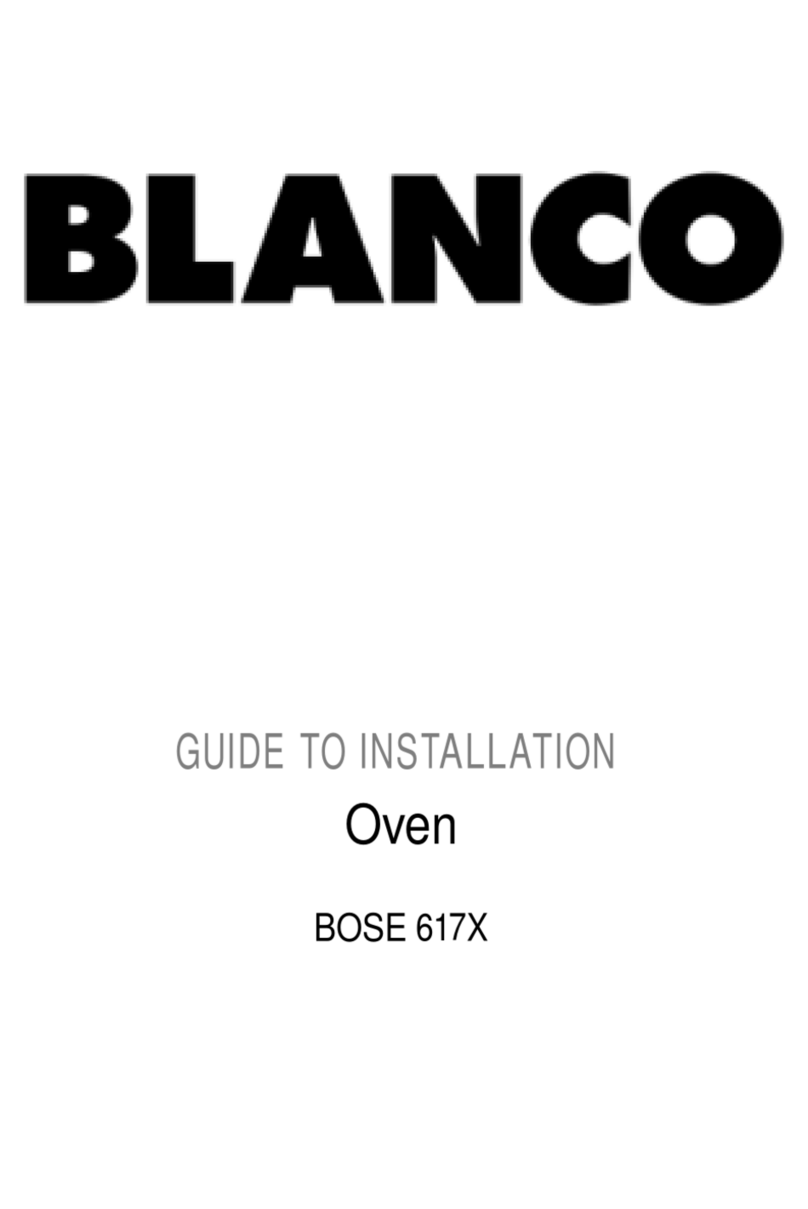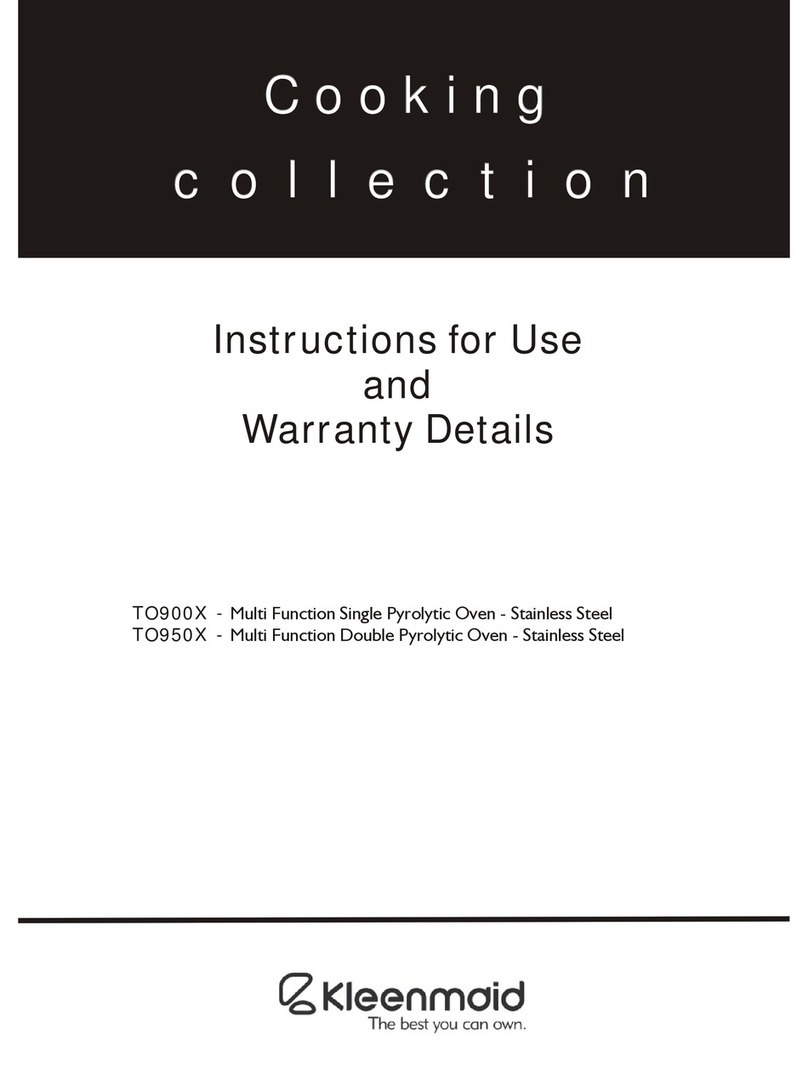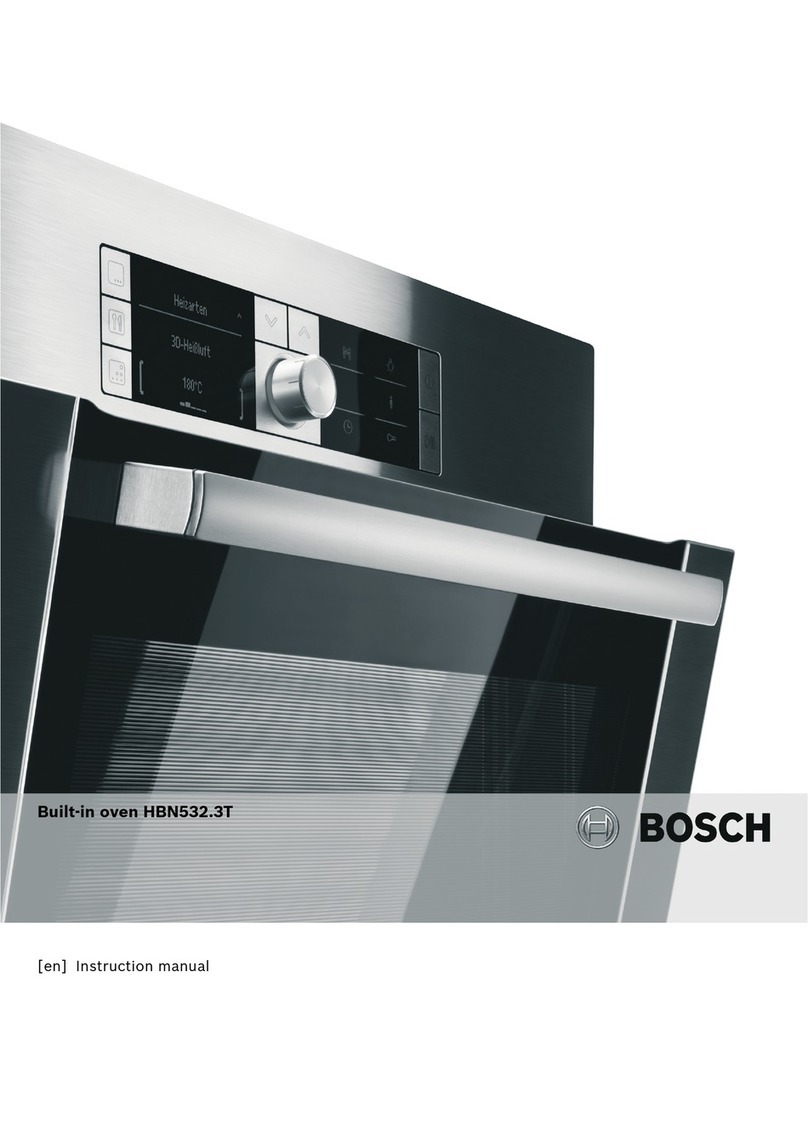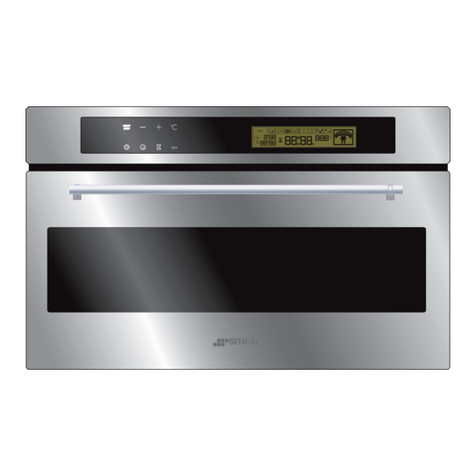
The diameter of the pot and pan floors should be
according to the size of the cooking zone, or bigger.
Pans and pots, which are too small on the cooking
zone lead to energy losses. Note: Dishes producer
partly indicate the upper pot diameter.
larger than the diameter of the pot floor.
Use a small pot for small quantities. A large pot,
which is only slightly filled, required a lot of energy.
Use as little water as possible. This saves energy.
Vegetables retain their vitamins.
Alway
s close pots with a suitable lid. When cooking
without lid you need four times more energy. When
using glass lids, more energy can be saved because
you can see into the pot without open the lid.
Use a quick cooker to clearly reduce the cooking
After boiling or frying, switch off the used cooking
zones to a smaller power level.
Use the residual heat of the pan, the pot and the
food. Switch off the cooking zones 5
Information to reduce the environmental e
Information to reduce the environmental eInformation to reduce the environmental e
Information to reduce the environmental e
cooking
cooking cooking
cooking
(acc. VO (EU) No. 66/2014 appendix I, No. 2)
(acc. VO (EU) No. 66/2014 appendix I, No. 2)(acc. VO (EU) No. 66/2014 appendix I, No. 2)
(acc. VO (EU) No. 66/2014 appendix I, No. 2)
We recommend the use of dark baking molds and
plates, because they conduct the heat better.
Any unnecessary accessories should be removed
from the baking chamber before using the
During cooking, the oven door should remain closed
to avoid unnecessary heat loss.
Only preheat the oven if required by the recipe.
If a selection of cooking time is specified, always use
the lowest recommended temperature.
by switching back to minimum
temperature shortly before the end of the cooking
The diameter of the pot and pan floors should be
according to the size of the cooking zone, or bigger.
Pans and pots, which are too small on the cooking
zone lead to energy losses. Note: Dishes producer
partly indicate the upper pot diameter.
larger than the diameter of the pot floor.
Use a small pot for small quantities. A large pot,
which is only slightly filled, required a lot of energy.
Use as little water as possible. This saves energy.
s close pots with a suitable lid. When cooking
without lid you need four times more energy. When
using glass lids, more energy can be saved because
you can see into the pot without open the lid.
Use a quick cooker to clearly reduce the cooking
After boiling or frying, switch off the used cooking
Use the residual heat of the pan, the pot and the
Information to reduce the environmental e
Information to reduce the environmental eInformation to reduce the environmental e
Information to reduce the environmental e
ffect of
ffect of ffect of
ffect of
(acc. VO (EU) No. 66/2014 appendix I, No. 2)
(acc. VO (EU) No. 66/2014 appendix I, No. 2)(acc. VO (EU) No. 66/2014 appendix I, No. 2)
(acc. VO (EU) No. 66/2014 appendix I, No. 2)
We recommend the use of dark baking molds and
plates, because they conduct the heat better.
Any unnecessary accessories should be removed
from the baking chamber before using the
During cooking, the oven door should remain closed
Only preheat the oven if required by the recipe.
If a selection of cooking time is specified, always use
the lowest recommended temperature.
by switching back to minimum
temperature shortly before the end of the cooking
Save electricity! If you do not need the oven, switch
off functions such as interior lighting, program, te
Clean the oven after each application, to keep the
aning effort as low as possible.
We recommend the use of biological cleaners.
Cleaning and Maintenance
Cleaning and MaintenanceCleaning and Maintenance
Cleaning and Maintenance
WARNING:
WARNING:WARNING:
WARNING:
•
Always switch off the appliance completely and
where required, disconnect
Allow the appliance to cool
use steam cleaners for cleaning the
; moisture could enter electrical components.
Risk of electric shock!
Risk of electric shock!Risk of electric shock!
Risk of electric shock!
Never use flammable substances, such as thi
gasoline or acids for cleaning
The appliance must be dry before restarting ope
ation.
CAUTION
CAUTIONCAUTION
CAUTION:
::
:
•
Do not use a wire brush or other sharp, abrasive
harsh abrasive cleaners or sharp me
al objects for cleaning the glass surface. The su
faces can be scratched or destroyed.
the application and safety notes
of the detergent.
Cleaning the hob
Cleaning the hobCleaning the hob
Cleaning the hob
•
Clean the hob and the cooking
damp cloth or a commercial cleaner.
Ideally, you maintain the steel hobs in lukewarm
state after cleaning with some lubricating oil (a
very thin oil film is sufficient).
Save electricity! If you do not need the oven, switch
off functions such as interior lighting, program, te
Clean the oven after each application, to keep the
aning effort as low as possible.
We recommend the use of biological cleaners.
Cleaning and Maintenance
Cleaning and MaintenanceCleaning and Maintenance
Cleaning and Maintenance
Always switch off the appliance completely and
where required, disconnect
Allow the appliance to cool
use steam cleaners for cleaning the
; moisture could enter electrical components.
Never use flammable substances, such as thi
gasoline or acids for cleaning
The appliance must be dry before restarting ope
Do not use a wire brush or other sharp, abrasive
harsh abrasive cleaners or sharp me
al objects for cleaning the glass surface. The su
faces can be scratched or destroyed.
the application and safety notes
Clean the hob and the cooking
damp cloth or a commercial cleaner.
Ideally, you maintain the steel hobs in lukewarm
state after cleaning with some lubricating oil (a
very thin oil film is sufficient).




















